Skyscrapers
Skyscrapers are without a doubt a man made wonder of the modern world. They are a marvel of technology and a triumph of innovation. It's an enduring battle of man against nature and the laws of physics.
The Burj Khalifa standing at 828m tall is a monument to this struggle. It's almost 200m taller than its nearest rival the Shanghai Tower. According to its official twitter account it can hold up to 35,000 people. It's a small city in just one building.
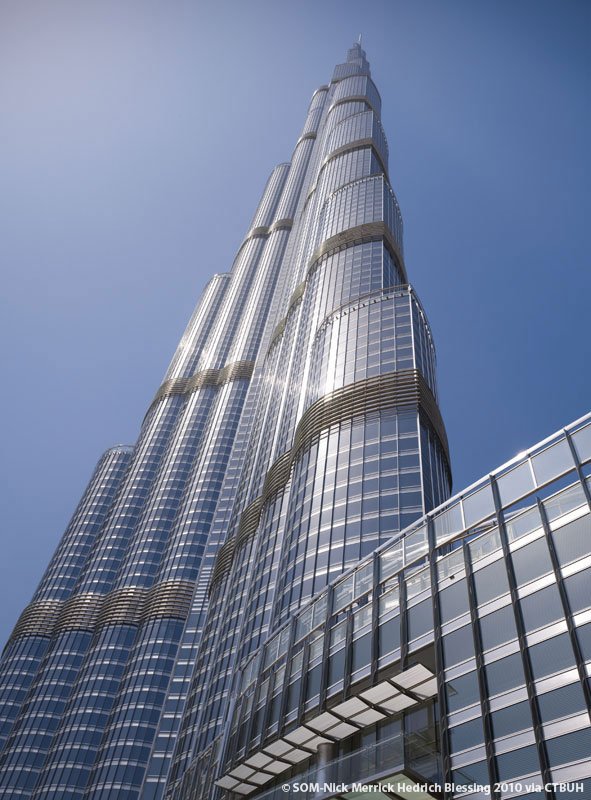
Burj Khalifa, Dubai
In the cities of the future you may never even need to leave the building, its conceivable you could be born work, sleep, eat, exercise go to the hospital and die all in one self contained airconditioned unit.
Early Sky Scrapers
As far back as Roman times high rise apartments as tall as 20-25m were built with 10 or more stories. In more modern times the skylines of many important medieval cities had large numbers of high-rise urban towers, built by the wealthy for defence and status.
In the town of Shibam in Yemen (a UNESCO World Heritage Site) residential towers dating back 100s of years make this Manhattan of the desert. The distinctive buildings built of mud towering up to 11 stories are some of the oldest surviving buildings which could be considered skyscrapers.
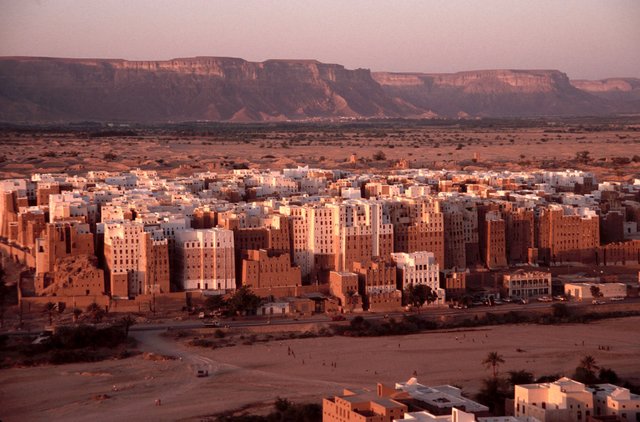
Shibam, Yemen Modern Day
Image Source https://www.wikipedia.org/
Modern Skyscrapers
Modern skyscrapers would not be possible without a series of innovations which began in the mid 1800s in America. Most people recognise the innovation of materials that has contributed but there were many more crucial components that needed to be invented before vertical cities were possible.
Mobility
The first key innovation was that of the passenger Elevator. Elevators in modern office buildings are taken for granted but before the construction of the 43m tall Equitable life Building in New York in 1870, including an Elevator, the prime real estate was the ground floor. Hitherto the higher you went the higher the stairs and less desirable the floor. Elevators turned the economics of real estate on its head. Suddenly the prime real estate was the top floor, far away from the dusty noisy street.
Elevators date back to Roman times but passenger elevators in office buildings were not employed until the construction of the Equitable life building in New York. Elisha Otis had invented a safety elevator in 1852 which would lock the elevator in place if the elevator rope snapped. Before this there was no safety mechanism to stop the lift from plummeting down the shaft.
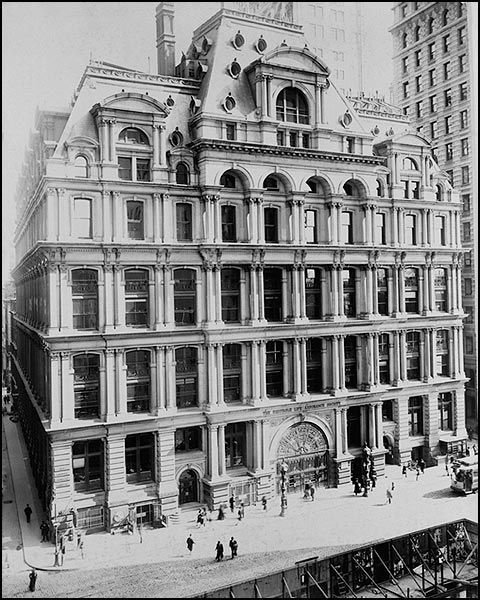
Equitable Life Building New York
Image Source http://www.nyc-architecture.com
Materials
The next innovation was materials. The ancient Skyscrapers all suffered from a similar problem. They were constructed with load bearing outside walls. The higher they went the thicker and heavier the lower walls had to be. This meant the lower floor space would be smaller and materials costs more expensive the higher they went.
The Flatiron Building in New York (which I always mispronounced until this article) was the building that first used a steel grid frame to reduce the load placed on the lower floors. The outside masonry walls are like a concrete curtain over the building and the design allowed this building to soar to 20 stories. Variations of this structure were developed over the years but the same basic principle is still in use today.
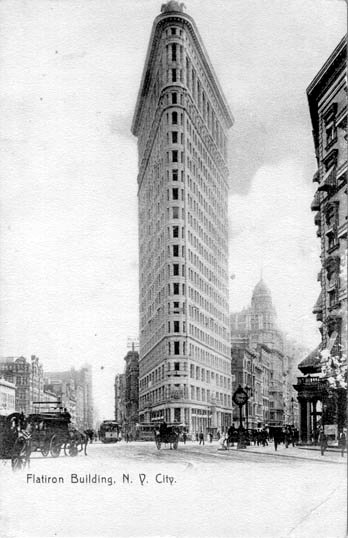
Flatiron Building New York
Image Source http://www.nyc-architecture.com
Assembly
Have you ever wondered how they build so high. There is no crane tall enough to stretch 830m to lift the large sections of the building up to the worlds tallest buildings. Kangaroo Cranes from Australia were first used in the US to construct the world trade center in the 1930s. These cranes extend themselves usign hydrolic lifts and rise with the building as it grows. I always wondered how they got these down from the top. (See youtube videos below)
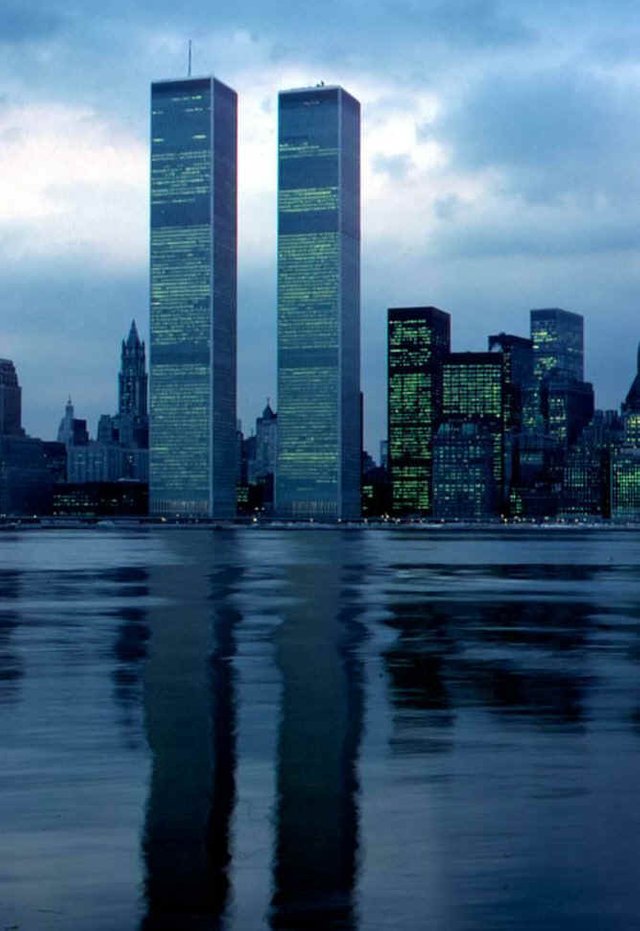
World Trade Center
Image Source http://www.nyc-architecture.com
Nature
Two forces of nature can wreak havoc on tall buildings; Wind and Earthquakes.
Wind
Early skyscrapers were built using a central frame steel structure but this meant that wind shear would shake the top floors and could make people "seasick" like being on a rocking ship at sea. The Sears tower built in Chicago in 1970 modified the steel skeletal structure with a tubular construction, a steel exoskeleton rather than just a central steel support. This greatly reduced the swaying and made the building rock solid even over 100 floors high in the windy city.
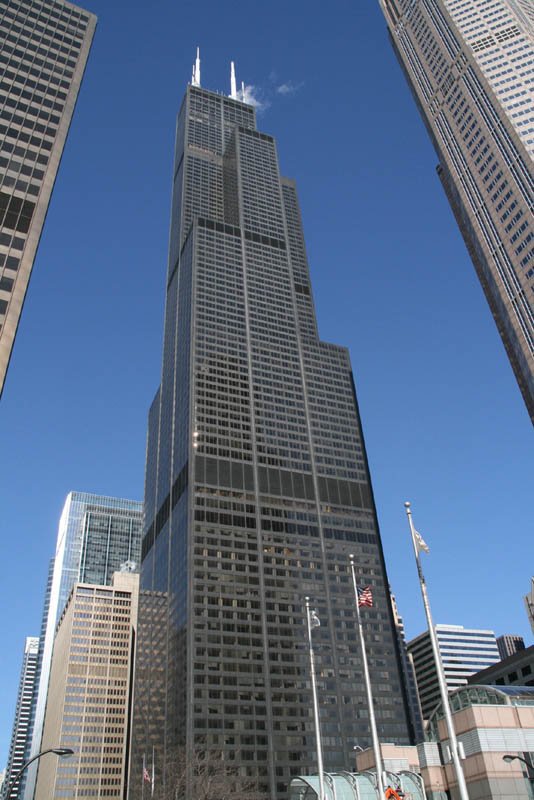
Sears Tower, Chicago
Image Source https://www.skyscrapercenter.com/
Earthquakes
Rigid structures quickly give way when the ground shakes. The Tapai 101 Tower completed in 2004 was built to be flexible where it could afford to be. An elastic skeleton built on top of rigid central columns. This allows the Tapai Tower to roll with the punches when mother nature strikes.
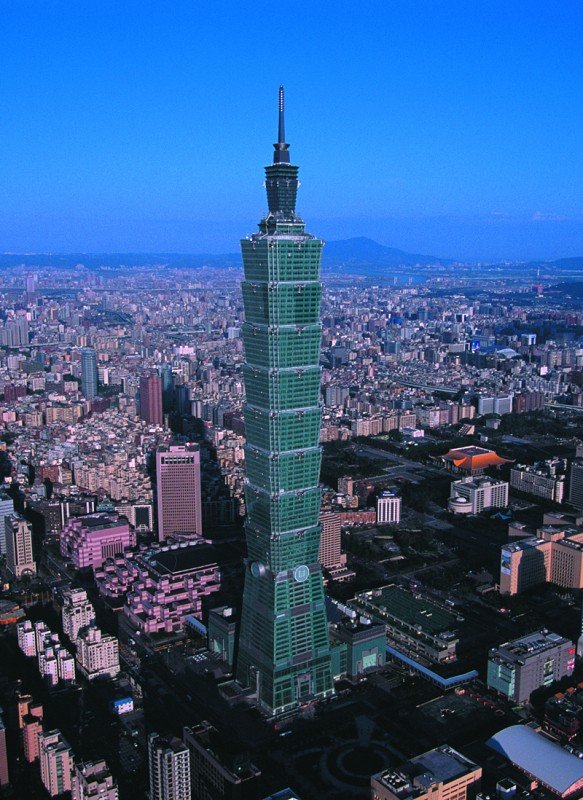
Tapei 101
Image Source https://www.skyscrapercenter.com/
These key innovations over the years, mainly from America, led to the combination of knowledge and experience to design, construct and build the Burj Khalifa in Dubai.
So how do they get the crane down?
This question has bugged me for many years. The answer is quite obvious:
- Sometimes its with other smaller cranes
The Mohawks
No discussion about skyscrapers would be complete without a mention of the fearless Native Americans who became synonymous with construction of skyscrapers in New York. The workers from this tribe either conquered their fears or were never born with any.
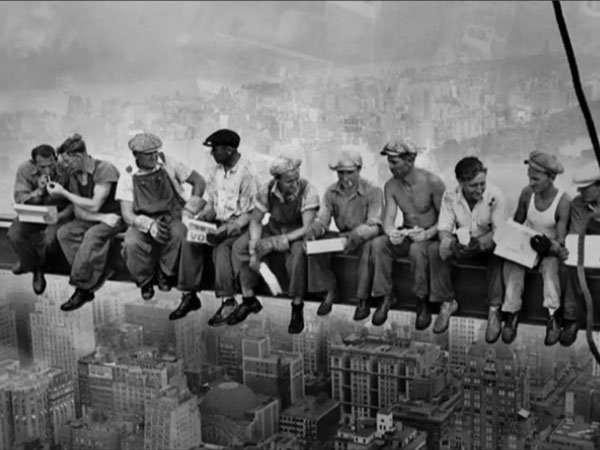
Mohawk Ironworkers “Top Off” the new One World Trade Center..a.k.a. the Freedom Tower.
Image Source http://www.whitewolfpack.com/
Cities of the Future
How high can these cities in the sky go?
The Kingdom Tower in Jeddah, Saudia Arabia is under construction and is expected to top out at over 1000m tall. That's 1km vertical. Of all the towers under construction most don't even reach half that height so it will be a long time before that height is surpassed and indeed time will tell if that is the limit of how high man can or is willing to go.
Challenges
Many thought that chilling day in September 2001 would spell the end for these vertical cities. When the World trade center was attacked it proved impossible for many to get out in time. The building was inaccessible to emergency services and took so long to evacuate that ultimately nearly 3,000 people lost their lives that day.
How would a building almost twice the height of the world trade center be evacuated in an emergency?
Refuge Rooms
The answer to this may lie in Refuge Rooms.
The Burj Khalifa has built Refuge rooms, every few floors. These fireproof smoke proof rooms are designed to be where residents can take shelter in case of emergency for up to 2 hours. Residents would not try to evacuate but rather would wait out the emergency until help arrives. There is not a lot of information about these rooms available but they don't fill me with confidence. One site has posted the following
"As an added safety precaution in the event of a fire, sandstorm or earthquake, a highly trained team of emergency specialists will remain onsite at the Burj building 24 hours a day, seven days a week."
Hmmmmm........................
My Visit to Dubai
I lived for a year in Dubai but unfortunately the highest building at the time was the Emirates tower at a measly 350m. It now boasts over 18 buildings 300m+. I will have to pay a return visit soon.
My Visit to New York
In 2005 I visited New Your and I was blown away how 3 dimensional the city was. Everywhere other city you go to you can have a sense of spacial awareness but in New York you have to think left, right and up and down. It's a very unusual feeling. The highlight of the trip was a drink in the Rockefeller Center. Not the tallest building but with a great view of the tallest building at the time (and without the crowds). What was really special when I was there was the weather. There was a thunder and lightening show and the Empire State building got struck literally a few hundred yards from our window a the top of the Rock.
Further Reading
If your looking for top 100s, tables of specs and information on proposed constructions https://www.skyscrapercenter.com/ is a treasure trove.
The following clip provides a history of the innovations that led to the construction of the Burj Khalifa. It also has some great 3D graphics of some of the key buildings mentioned in this post.
Thank you for reading this. I write on Steemit about Blockchain, Cryptocurrency, Travel and lots of random topics.
Very interesting post, this has brought back memories for me. I to remember the feeling in NY, only my experience was from the Empire State building. I remember the feeling of awe, looking out over the towering skyscrapers thinking how close they were to the Hudson river. Thinking all this heavy steel and cement so close to this flowing river, what prevented it from toppling into the water. And I also had the sense of the multiple layers of society. I had spent the day walking around the city, and my feet were very tired. So it was late in the afternoon when we made our way to the observation deck of the Empire State building. During the day I had experienced riding the subway into Grand Central Station and seeing the multi-layered transportation system. Then walking around, including coffee at the Trump building, visiting the Rockefeller Center, and trying to find the Seinfeld coffee shop. But I'll never forget looking out from the Observation deck and thinking that all those dots, which were the people, they are only a small part of the reality of NY life. The city is really 5 to 7 layers of people, all busy, all going somewhere, but seemed as though never arriving at their destination. @eroche, thanks for bringing all this to mind, awesome!
I hadnt thought of the multiple layers of society but your so right. I remember thinking at the top of the Empire state how unreal it was. Looking out over the city. A great experience. I saw it in the evening after dark, i will have to go back and go up in the day time. I hadn't noticed the river that much for that reason.
I visited several of those you mention in your post. I actually really like going to the top if various skyscrapers and enjoy the view :)
The amazing stuff with the Taipei 101 tower consists of huge balls (one of the top and one of the bottom) that moves during earthquakes and strong winds to relax the constraints on the structure of the tower.
Apparently it's a very flexible building. A bit scary.
I haven't visited there yet but it's on the list :)
Not more scary than others, actually. What really amazed me are the pictures of the ball moving. They are broadcasted somewhere in the building (maybe in the top ball room but I am not sure anymore).
Very interesting I found this video, its a kind of damper to use gravity to keep it steady. Amazing.
Yep that's the damper :) Note that the video does not witness its size. It is really really big.
Skyscrapers beautiful, but very to be appreciated is the one who designed it, it was so difficult to work, it is inconceivable.
I do not know how you could conceive such a thing. Maybe now with 3d graphics but imagine 100 years ago. amazing stuff.
I can imagine it, because this is one of the civil engineering department at the time I was in college
This post has been ranked within the top 80 most undervalued posts in the first half of Feb 13. We estimate that this post is undervalued by $3.04 as compared to a scenario in which every voter had an equal say.
See the full rankings and details in The Daily Tribune: Feb 13 - Part I. You can also read about some of our methodology, data analysis and technical details in our initial post.
If you are the author and would prefer not to receive these comments, simply reply "Stop" to this comment.